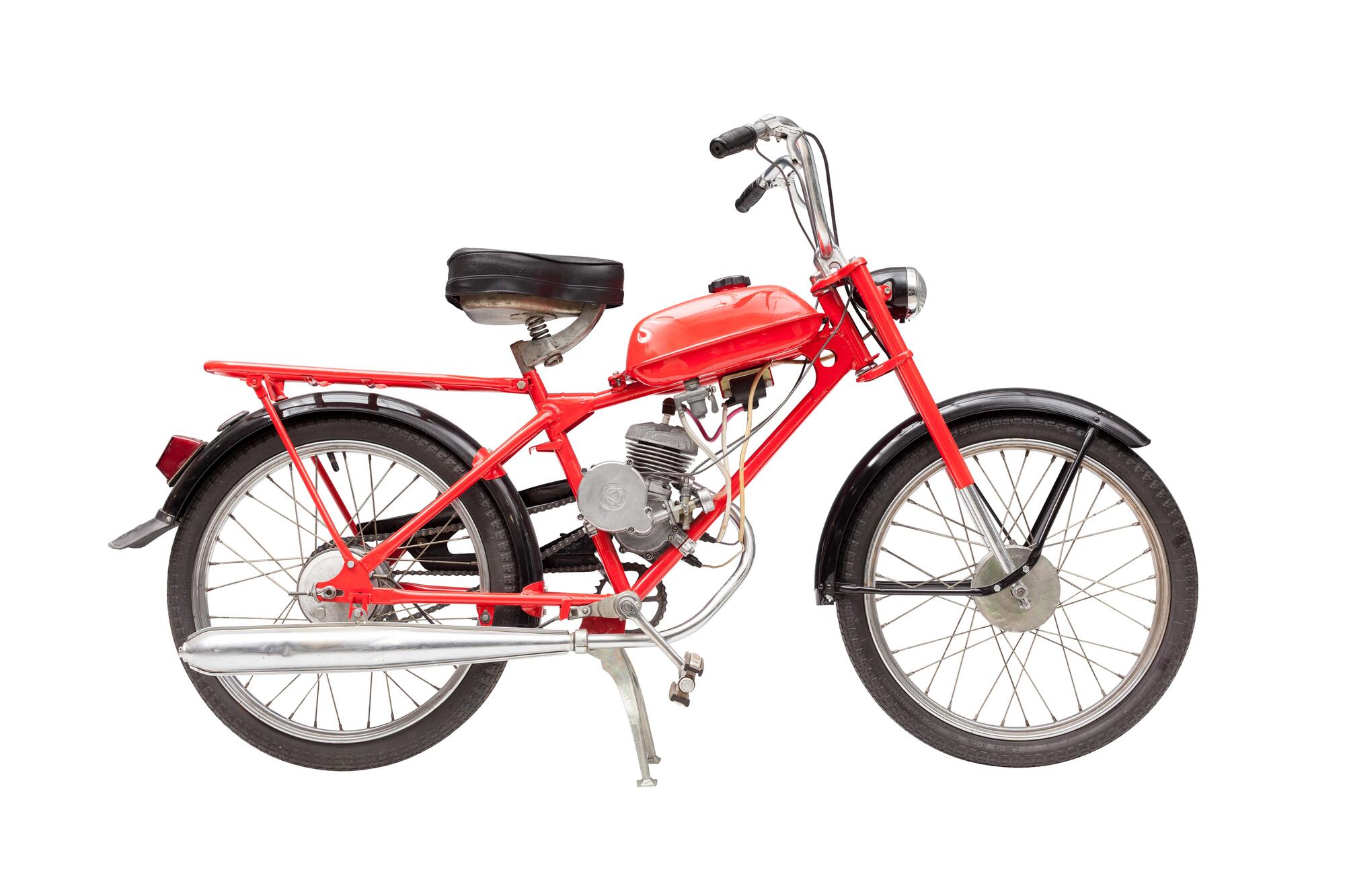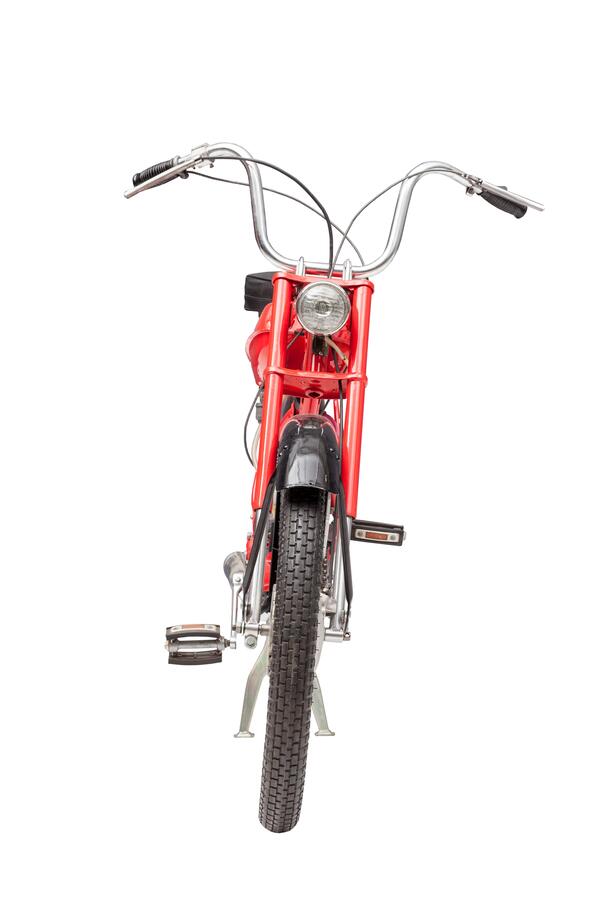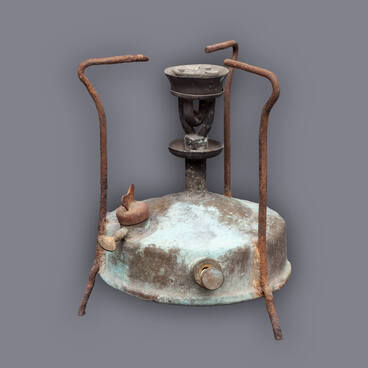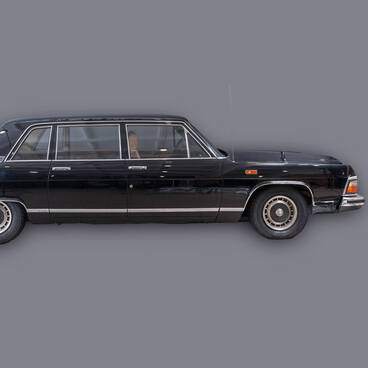In 1983, the Sarkanā Zvaigzne Factory in the Latvian capital launched mass production of the light Riga-13 moped to replace the popular Riga-11. Like all other mopeds of this type, it did not have a gearbox and was equipped with an additional pedal drive.
The updated model differed from its predecessor both in its appearance and improved specifications. One of the main changes was an increase in the engine power by 0.3 hp which was achieved mainly due to the new exhaust system: an exhaust pipe and a muffler. The modifications helped to improve the machine’s dynamic qualities while keeping the same maximum speed.
The designers increased the fuel capacity from 4 to 5.5 liters, returning to the characteristics of the earlier Riga-7 model and allowing riders to purchase five liters of gasoline which was the minimum amount for filling gasoline at Soviet fuel stations. The fuel tank was moved from the rear wheel to the front section of the frame, improving fuel supply and ensuring its full utilization.
Two drive chains connected the rear wheel to the engine and the bottom bracket that had bicycle-type pedals. This drive layout allowed riders not only to start the engine by pedaling but also to use the moped as a bicycle. This feature made the Riga moped stand out from most of the similar foreign machines that only used the pedals for launching the engine and braking.
The Riga-13 had an improved rear brake actuator and rear-wheel drive components. The backbone frame was replaced by a diamond frame. This helped to reduce the moped’s weight by two kilograms.
The Riga-13 was equipped with a rear-view mirror. It had a dry weight of 42 kg and a working load of 100 kg. The moped could reach a top speed of 40 km/h. The designers managed to achieve an average fuel consumption rate of 2.2 liters per 100 kilometers.
The manufacturer recommended using a fuel/oil mix of the A-76 or А-72 gasoline and oil in a 25 to 1 ratio. The Riga-13 was the factory’s most mass-produced moped and was manufactured until the enterprise shut down in 1998.
The updated model differed from its predecessor both in its appearance and improved specifications. One of the main changes was an increase in the engine power by 0.3 hp which was achieved mainly due to the new exhaust system: an exhaust pipe and a muffler. The modifications helped to improve the machine’s dynamic qualities while keeping the same maximum speed.
The designers increased the fuel capacity from 4 to 5.5 liters, returning to the characteristics of the earlier Riga-7 model and allowing riders to purchase five liters of gasoline which was the minimum amount for filling gasoline at Soviet fuel stations. The fuel tank was moved from the rear wheel to the front section of the frame, improving fuel supply and ensuring its full utilization.
Two drive chains connected the rear wheel to the engine and the bottom bracket that had bicycle-type pedals. This drive layout allowed riders not only to start the engine by pedaling but also to use the moped as a bicycle. This feature made the Riga moped stand out from most of the similar foreign machines that only used the pedals for launching the engine and braking.
The Riga-13 had an improved rear brake actuator and rear-wheel drive components. The backbone frame was replaced by a diamond frame. This helped to reduce the moped’s weight by two kilograms.
The Riga-13 was equipped with a rear-view mirror. It had a dry weight of 42 kg and a working load of 100 kg. The moped could reach a top speed of 40 km/h. The designers managed to achieve an average fuel consumption rate of 2.2 liters per 100 kilometers.
The manufacturer recommended using a fuel/oil mix of the A-76 or А-72 gasoline and oil in a 25 to 1 ratio. The Riga-13 was the factory’s most mass-produced moped and was manufactured until the enterprise shut down in 1998.




